
Jewelry Scales and Balances
Gold and Diamond Scales for Accurate Jewelry Weighing
A jewelry balance is a device designed to accurately weigh diamonds, gemstones, gold, silver, and other precious metals. Our jewelry scales and balances are made of high quality materials and have overload protection to ensure reliable performance for years to come. Smart features simplify daily jewelry weighing tasks, while our battery-operated models are perfect for weighing on the go. Furthermore, you can easily connect the balance to a printer or second display.
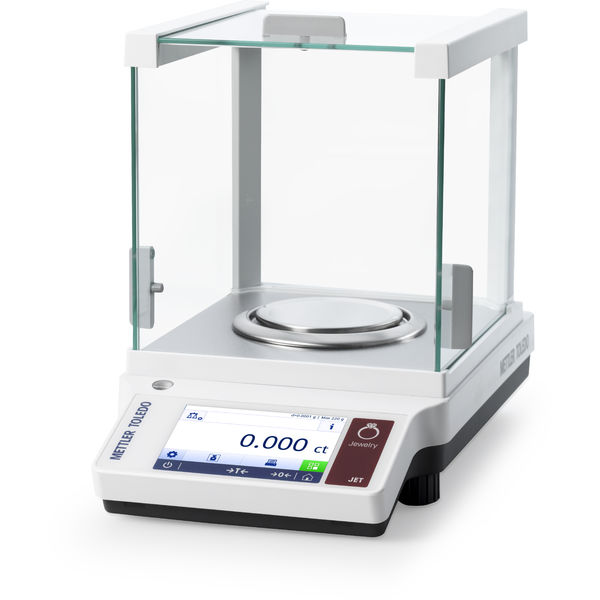
Carat Balance JET503C/00
Accurate and reliable for trusted jewelry weighing. 505 ct/101 g capacity, 0.001 ct/0.1 mg readability, 4.5'' color touchscreen, FACT fully automatic internal adjustment, 3 interfaces, 8 built-in applications, overload protection, metal base.
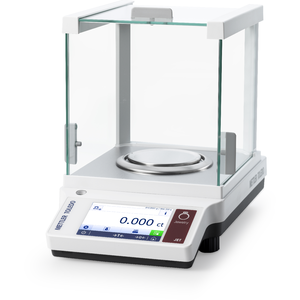
Carat Balance JET703C/00
Accurate and reliable for trusted jewelry weighing. 700 ct/140 g capacity, 0.001 ct/0.1 mg readability, 4.5'' color touchscreen, FACT fully automatic internal adjustment, 3 interfaces, 8 built-in applications, overload protection, metal base.
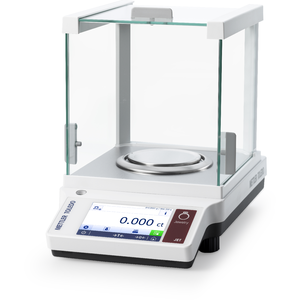
Carat Balance JET1103C/00
Accurate and reliable for trusted jewelry weighing. 1100 ct/220 g capacity, 0.001 ct/0.1 mg readability, 4.5'' color touchscreen, FACT fully automatic internal adjustment, 3 interfaces, 8 built-in applications, overload protection, metal base.
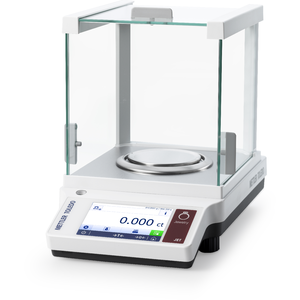
Carat Balance JET1603C/00
Accurate and reliable for trusted jewelry weighing. 1600 ct/320 g capacity, 0.001 ct/0.1 mg readability, 4.5'' color touchscreen, FACT fully automatic internal adjustment, 3 interfaces, 8 built-in applications, overload protection, metal base.
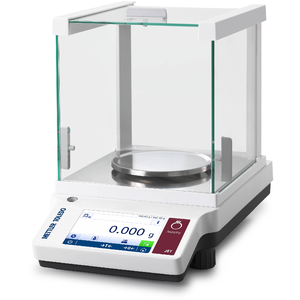
Gold Balance JET303G/00
Accurate and reliable, for trusted jewelry weighing. 320 g capacity, 0.001 g readability, 4.5'' color touchscreen, FACT fully automatic internal adjustment, 3 interfaces, 8 built-in applications, overload protection, metal base.
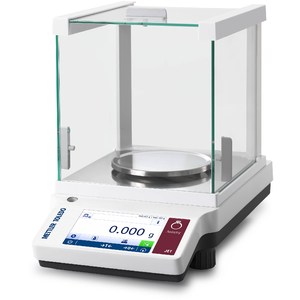
Gold Balance JET603G/00
Accurate and reliable, for trusted jewelry weighing. 620 g capacity, 0.001 g readability, 4.5'' color touchscreen, FACT fully automatic internal adjustment, 3 interfaces, 8 built-in applications, overload protection, metal base.
Advantages of METTLER TOLEDO's Jewelry Scales
Do you want your balance to perform at its best? Get it serviced by the market leader
Do you want your balance to perform at its best? Get it serviced by the market leader
FAQ - Jewelry Scales and Balances
- How long will spare parts be available for my new jewelry scale?
- What balance readability is recommended for weighing gold and for weighing silver?
- How can I clean my jewelry balance?
- What is the difference between carat in gold weighing and carat in diamond weighing?
- Which is the best kind of scale for weighing diamonds and other precious stones?
- How often do I need to recalibrate my jewelry scale?
- What is the d value and what is the e value? What does it mean when we talk about e=d or e=10d?
- My jewelry scales have a readability of 0.01 g. Does this mean I can weigh items as small as 0.01 g?
- How can I find out if I need a Legal for Trade jewelry scale or a regular jewelry scale?
- What is the difference between a jewelry balance and a laboratory balance?
- Is a Legal for Trade jewelry scale more accurate than a regular jewelry scale?
How long will spare parts be available for my new jewelry scale?
Spare parts for jewelry balances and scales are readily available at any time. If we stop production of a particular jewelry balance model, spare parts will be available for a further three years after the end of production.
What balance readability is recommended for weighing gold and for weighing silver?
For weighing gold, a jewelry balance with a readability of 0.01 g is recommended. For weighing silver, a readability of 0.1 g/1 g is recommended.
How can I clean my jewelry balance?
General dust and dirt on your jewelry balance can be wiped off with a damp cloth. More thorough cleaning is achieved through the use of isopropanol/ethanol (70%). Acetone is not recommended. For more information on balance cleaning, check out our balance cleaning guide.
What is the difference between carat in gold weighing and carat in diamond weighing?
In gold weighing, the number of carats, or karats (k), refers to the purity of the gold with 24 carat gold (24k) being the most pure. When weighing diamonds, carat is the weight unit. 1 ct is equivalent to 200 mg.











